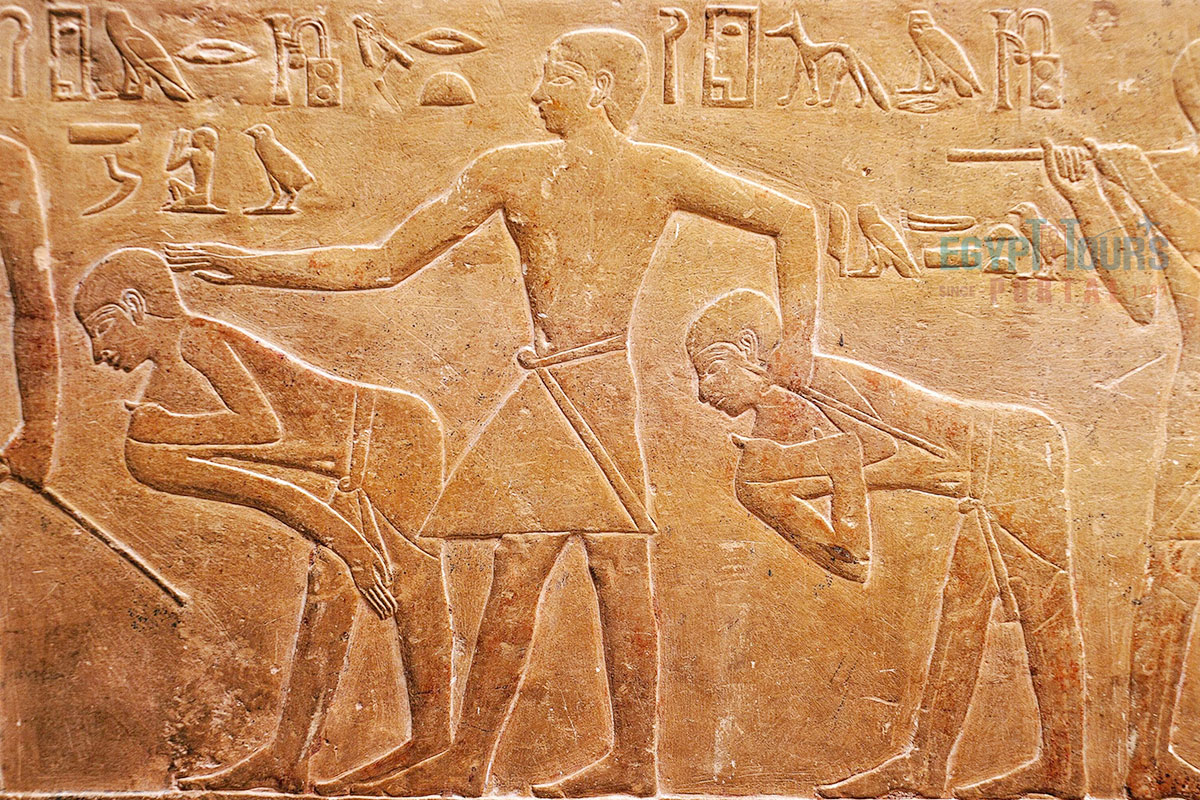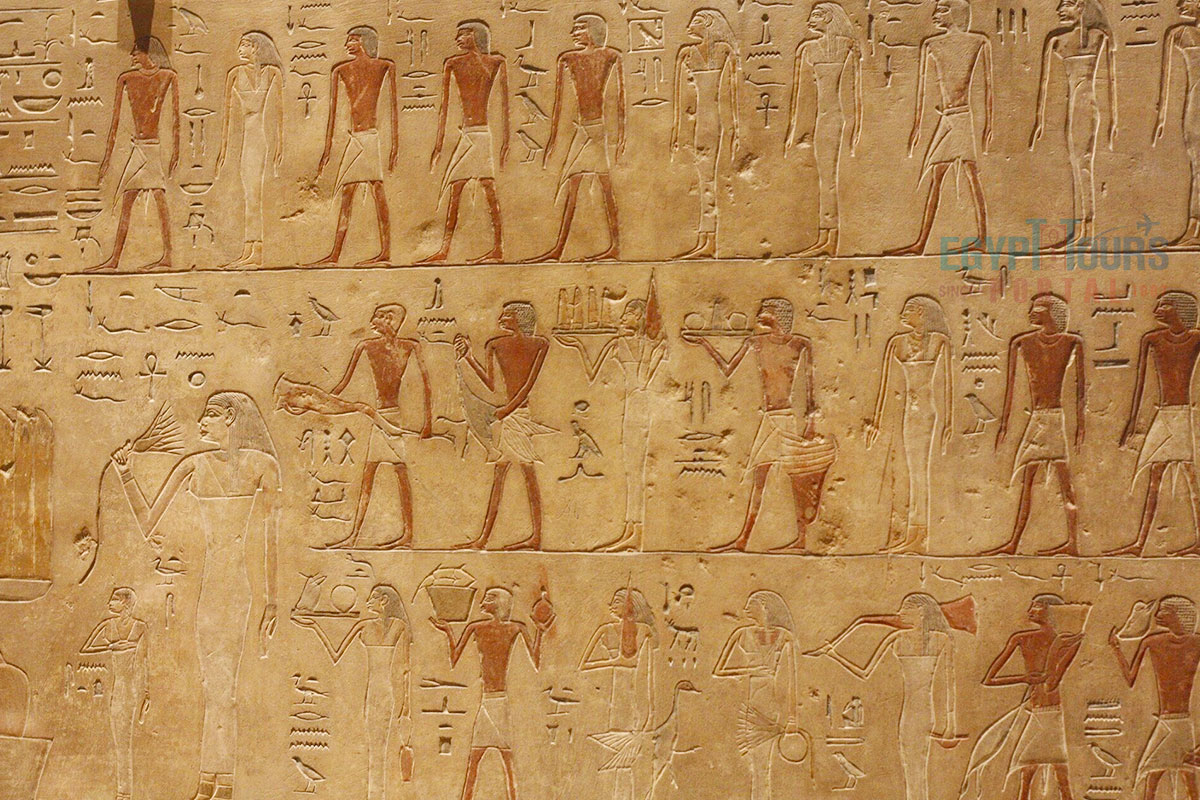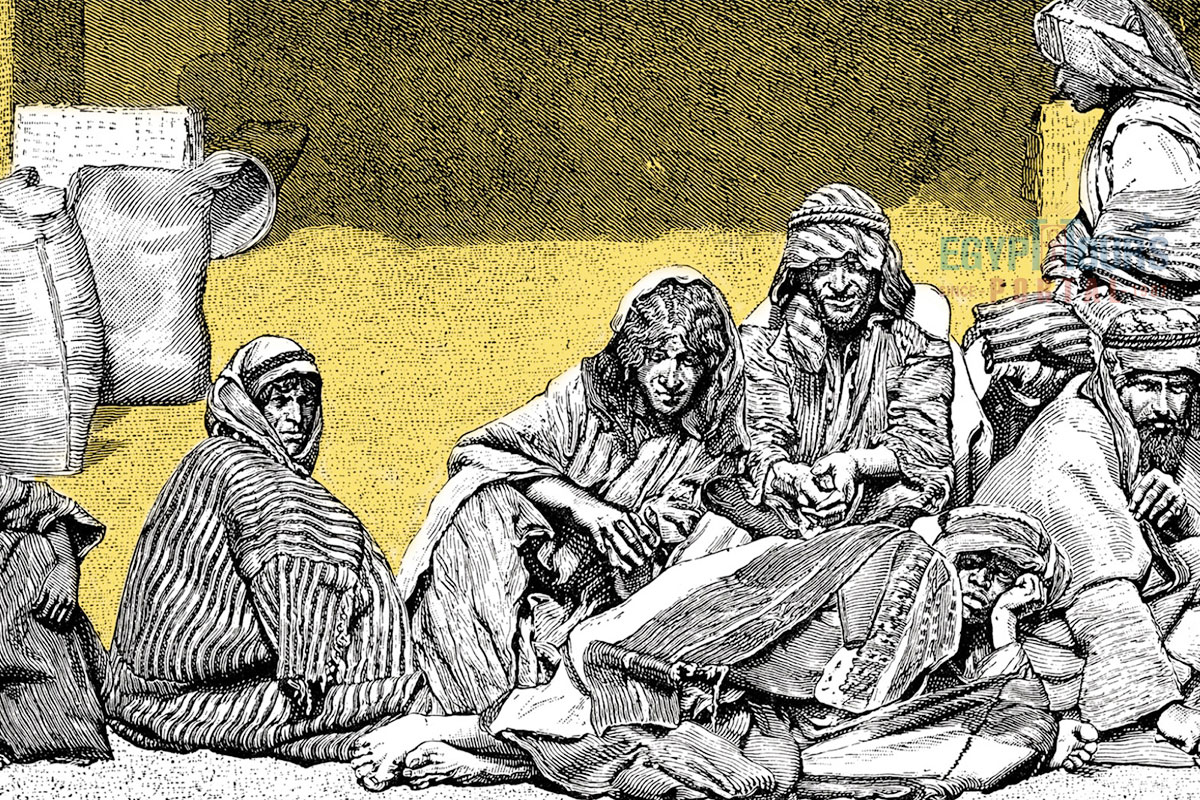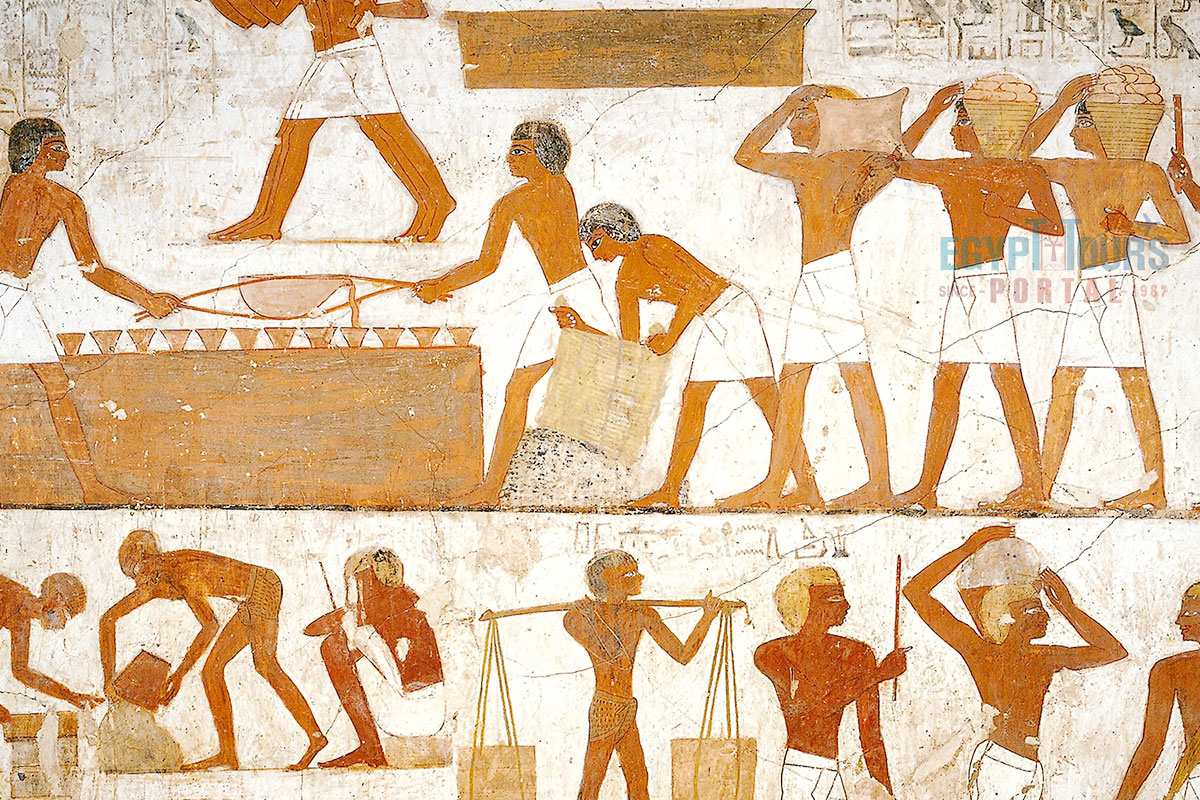Slavery in ancient Egypt was a complex system shaped by conquest, economy, and social hierarchy. Originating in the Old Kingdom (2700–2200 BCE), it included chattel slavery, bonded labor, and state-imposed work involving war captives, debtors, and locals. Slaves served in domestic, agricultural, and temple roles, with some granted limited rights, property ownership, or paths to freedom—especially during the New Kingdom and Greco-Roman periods. Contrary to popular myths, the pyramids were built by paid workers, not slaves. Slavery in Egypt gradually declined, ending with 19th-century legal reforms, reflecting a nuanced legacy of labor, power, and evolving rights.

Slavery in ancient Egypt is a highly controversial subject that showcases the social structure and the tactics the ancient Egyptians utilized to conquer their enemies and achieve immortality. Forced labor and servitude were prevalent across ancient Egypt as an industry, as the ancient Egyptians sought to maintain dominion over their kingdoms and adapted their political and social structures to benefit their economic interests, which included the concept of "bond for life labor".
Egypt saw the development of slavery as private property, with slaves being bought and sold. Throughout the history of Egypt, while slaves had some legal protections and limited property rights, their rights were still limited. The presence of slavery not only proved profitable for ancient Egypt but also contributed to the maintenance of power and stability within the ancient Egyptian kingdoms that spanned over two thousand years in long periods of prosperity.

Slavery in ancient Egypt, like some of the ancient civilizations, existed to a certain degree, which dated back to the Old Kingdom period (2700 - 2200 BC), which was very hard to deceive due to the terminology utilized by the ancient Egyptians to describe various forms of servitude throughout their vast dynastic history. The differentiation of these classes of slaves was based solely on word usage, which has been a confusing and difficult task. There were three different types of enslavement within ancient Egyptian society which are chattel slavery, forced labor, and bonded labor, but even these different categories can be subject to many individual interpretations.
The labor culture of Egypt was highly diverse which was encompassing various individuals from different social ranks. The Egyptian term translated as the phrase "slave" doesn't align with the current modern definitions or traditional labor roles. Instead, it aligns with certain classifications like "peasant," "servant," and "slave" which were used to describe various roles depending on the context. In the Egyptian language, words like 'bAk' and 'Hm' referred to laborers or servants, while some texts used 'sqrw-anx', which means "bound for life" to denote slave-like individuals, implying lifelong bondage and servitude.

The War Prisoners captured by the ancient Egyptian army in the Old Kingdom (2700 - 2200 BC) were referred to as "skrw-'nh," which translates to "bound for life." It's important to note that this term wasn't exclusively used for "slaves" but specifically for war prisoners. The Egyptian term "hm" had two distinct meanings during this time: "Laborer" or "Servant." Several historical evidences, dating back to the 26th century BC in the reign of Pharaoh Sneferu can reveal that during military campaigns, prisoners of war, whether from Nubia, Libya, or other regions, were labeled as "skrw-'nh" and were forced to perform labor against their will which Some were inserted into the military.
Artifacts from this era depict captured war prisoners with the images of their hands bound behind their backs. Initially, the focus of such campaigns was Nubia, due to its cultural similarity, geographical proximity, and competitive nature in terms of imperial dominion. However, over time, these campaigns expanded to include capturing war captives from Libya and Asia. Moreover, even local Egyptians could find themselves in servitude because of economic instability and debts. Furthermore, officials who misused their influence and power could be reduced to absolute servitude as a form of punishment or consequence, as the ultimate form of humiliation.
With the beginning of the Middle Kingdom (2040 - 1782 BC), slaves were initially seen as individuals with pure dignity, but were ultimately used as property. When individuals borrowed money and couldn't repay it, their family members, especially women, were often sold into slavery. Records from the Middle Kingdom reveal that coerced laborers included fugitives, conscripts, and royal laborers, and they were used in state enterprises. Forced labor was also performed on state-owned arable land. Attempting to escape or being absent from work could lead to a lifetime of coerced labor.
Military campaigns continued to enslave Asiatics and state-owned slaves who shared a similar status with them. Asiatics could have Egyptian names but were still identified by their ethnicity in inscriptions or papyri. Both state-owned and Asiatics slaves had diverse roles, from fieldworkers and house servants to cobblers and hairdressers. Household servants who didn't meet expectations could be fired, but in some cases, they formed emotional bonds with their households, as evidenced by the Cairo Bowl.
During ancient Egypt's New Kingdom Period, slaves could be owned both by elite individuals, such as the king, and by Communities that had gained more power and the ability to own and manage public property, which included slaves, which somewhat diminished the king's traditional authority. Some slaves during this period could also attain citizenship through methods like marriage. Also, the military's expansion led to a growing need for coerced labor. This era marked a significant increase in foreign slavery due to relentless military campaigns.
Egypt became a major buyer of international slaves through the Mediterranean slave market, often controlled by the great Asiatic Bedouins who captured and sold individuals, including travelers. Egyptian servants were generally treated better than foreign slaves. Foreign captives from military campaigns were referred to as "men in captivity" or "dependents." Some individuals, like Thutmose III's official Minmose, were rewarded with large numbers of dependents.
The defeated Sea Peoples were taken as war prisoners and enslaved. During this time, slaves could be rented, and Ramses III boasted about capturing countless foreign slaves during his military campaigns. The concept of freedom was contrasted with servitude in documents like the Adoption Papyrus, and methods for slaves to gain their freedom included marriage to a native and temple service.
Discover all the incredible battles and wars of the ancient Egyptian civilization
Read More
Slavery in Egypt was present throughout the history of Egypt until the early 20th century, following a transition from ancient Egyptian slavery to one governed by Islamic law. During Islamic rule, slavery in Egypt had three main categories: male slaves used as soldiers and bureaucrats, female slaves used as concubines, and female slaves and eunuchs employed in domestic service. Over time, agricultural slavery also emerged. Slaves in Islamic Egypt came from various regions, with "white" slaves originating from Europe and the Caucasus, while "black" slaves were primarily from Sudan and sub-Saharan Africa through the Trans-Saharan slave trade.
During the Abbasid Caliphate (750–935), Slavery in Egypt was dominated by imported slaves, often from regions with whom Egypt had treaties. Slave raids were conducted both within and outside these agreements. During the Fatimid Caliphate (909–1171), Slavery during this period included domestic servants and concubines. Slaves were categorized based on racial stereotypes, with different attributes assigned to each group. During the Mamluk Era (935–1250): Mamluks, initially of Turkic origin, were enslaved mercenaries who continued to hold significant influence in Egypt.
Their presence raised concerns among Islamic rulers. During Ottoman Egypt (1517–1805), Slavery continued, with "white" slave women often preferred as wives and concubines for Mamluk aristocrats. Slave concubinage was common in the harem. Muhammad Ali Dynasty (1805–1914): The number of slaves in Egypt during the 19th century is estimated to be substantial. "White" slave women were chosen as concubines for the elite, while "black" Africans served as domestic and agricultural slaves.
Explore more intriguing details about the daily routines, beliefs, and traditions of the Egyptians.
Read More
Ancient Egypt had a diverse range of slavery practices within a complex system, which included chattel slavery, bonded labor, and forced labor, each with its own characteristics and purposes throughout the social construct of ancient Egypt.
Chattel slaves in ancient Egypt were made of a combination of war captives, civilians born of slavery, or individuals who committed serious crimes. They were considered a valuable resource, and the pharaoh could use them for various purposes, including labor, temple service, rewards, or distributing them to soldiers as spoils of war.
Bonded labour; Some Egyptians could sell themselves or their children into bonded labor due to financial difficulties or debts. Creditors would acquire certain individuals who are in debt as slaves, along with their families, so the debt would be cleared out. Peasants could sell themselves into slavery to satisfy their most basic needs in times of poverty. Some slaves were obtained from international slave markets, who were often prisoners of war. Bonded laborers aspired for emancipation but had uncertain prospects of achieving it.
Ushabtis or Shabti were marvelous small funerary statues that were buried with the deceased Egyptian royalty or Pharaohs, who represented a form of slavery with a promise of a blessed afterlife. They were seen as a mythical ideology that represented the servants' loyalty to their masters and their everlasting obedience. The captives were promised a safe passage across the afterlife if they served as laborers and obeyed their masters.
The origins of this type of slavery are debated, with some suggesting a willingness to be held captive in exchange for entry into Egypt. Others believe Shabtis were held captive because they were from foreign lands. Many historians believe that the Shabtis were given a choice and payment of a promised afterlife.
The Ancient Egyptian government had a powerful forced labor system that employed workers from the common population for state projects like mining, military expeditions, quarrying, and construction. These workers were free but were required to perform certain labor as part of their duty to the state. They received wages based on their skill and social status, and this form of labor served as a form of taxation by the government.

Masters like the ancient Egyptian nobles who owned slaves who had certain obligations to them by providing all their basic needs. They could utilize their slaves for various purposes, including domestic services like being maids, cooks, nannies, brewers, & more, and labor services like being stable hands, gardeners, field hands, and more. The masters had the right to teach them trades and crafts to increase their value. They were not allowed to subject any child slaves to any kind of hard physical labor.

Ancient Egypt was mainly a peasant-based economy built on the foundation of farming, and slavery's significant impact came later during the Greco-Roman period (305 - 30 BC). Slave transactions were conducted through private dealers rather than public markets, involving local councils or official oversight and documented clauses. Pharaohs had the authority to grant slaves to individuals they deemed fit, typically viziers or nobles, bypassing standard procedures.
Learn about the advanced economic systems of the ancient Egyptian civilization
Read More
Most slaves, except for those working in temple estates, had a life similar to the servants. They could negotiate transactions and own personal property, but likely didn't receive wages. Slavery was a massive business during the New Kingdom period, with slaves coming from all over foreign lands. They were viewed as a symbol of the king's power, as the more they grew in number, the more the pharaoh was powerful. They were seen as a precious property to be bought and sold at any time, with their human qualities disregarded. Egyptian slaves were used for various purposes by their owners. slaves were primarily men, and women and entire families could also be forced into household service.
Although the nature of a slave's occupation had some fluidity, it didn't equate to freedom in the long run. Masters did not typically pay regular wages, and slaves worked in the hope of bettering their circumstances, receiving shelter, food, or a promise of a better afterlife. The lack of historical sources makes it challenging to describe their political or social independence. Some historical documents suggest that slaves could leave their masters under "justifiable grievances," but it remains to be historically proven.

Many Egyptologists widely agree that the Great Pyramids were not constructed by slaves but by paid laborers, as evidenced by archaeological findings in Cairo during the 1990s. These laborers were primarily ancient Egyptian farmers, with many skilled ancient Egyptian craftsmen who worked on the Egyptian pyramids during the times of the flooding seasons, when their agricultural work was halted. The claim that Israelite slaves had any part in the construction of the pyramid, which was popularized by Jewish historians and found in the Bible, is generally regarded as an origin myth rather than a historical fact.
Moreover, modern archaeology suggests that the Israelites were native to Canaan and did not reside in ancient Egypt in any significant numbers. Therefore, the biblical narrative does not align with the historical reality of pyramid construction and does not hold any historical basis.

Abolition of Slavery was not entirely banned, but saw significant restrictions during the late 19th century. The Anglo-Egyptian Slave Trade Convention in 1877 and a subsequent ban on the import of white women in 1884 marked important steps towards the end of the slave trade. Existing slaves were given some legal rights, including the right to apply for manumission.
The practice of slavery gradually diminished, impacting the harem system and elite families, though remnants of the institution persisted until at least World War I. These reforms marked the formal end of the importation of slaves into Egypt, but the institution itself persisted in various forms until its eventual abolition.
Slavery in ancient Egypt was a massive business that fed on the weak and took advantage of the troubles of unfortunate people. It can be seen as the necessary evil that played a role in the rise of ancient Egypt as a powerful civilization. But it is worth knowing that Egypt was by far the most progressive ancient civilization that gave more freedoms than simply taking them, as it understood the value of the soul and the character of each individual.
We deliver excellent Egypt holidays from Ireland and a marvelous Nile River cruise that will deliver magical cultural experiences, so everyone can enjoy the most enchanting travel experience.
Private 4 Days Cairo Tour Packages for Irish Travelers 4 days Cairo Egypt Tour packa...
Tour Location: Cairo – Giza...
5 Days Cairo and Alexandria Tour Package For Irish Travelers 5 days Cairo and Alexan...
Tour Location: Cairo/Giza/Alexandria...
6 Days Cairo, Luxor & Aswan Tour Package For Irish Travelers 6 days Cairo, Luxor...
Tour Location: Cairo/Giza/Aswan/Luxor...
Amazing 7 Days Cairo and Hurghada Holiday for Irish Travelers 7 Days Cairo & Hur...
Tour Location: Cairo – Giza – Hurgh...
The entire country of Egypt deserve to be explored with its every heavenly detail but there are places that must be seen before any other such as the breathtaking Hurghada's red sea, The wonders of Cairo the pyramids of Giza, the great sphinx, the Egyptian Museum, Khan El Khalili Bazaar, the wonders of Luxor like Valley of the Kings, Karnak & Hatshepsut temple and the wonders of Aswan such as Abu Simbel temples, Philea temple, Unfinished obelisk and The Wonders of Alexandria like Qaitbat Citadel, Pompey's Pillar and Alexandria Library. Read more about the best places to visit in Egypt.
If you want to apply for a Visa On Arrival that lasts for 30 days then you should be one of the eligible countries, have a valid passport with at least 6 months remaining and pay 25$ USD in cash, as for the E-Visa for 30 day you should have a valid passport for at least 8 months, complete the online application, pay the e-visa fee then print the e-visa to later be presented to the airport border guard. You could also be one of the lucky ones who can obtain a free visa for 90 days. Read more about Egypt travel visa.
Egypt has a variety of delicious cuisines but we recommend “Ful & Ta’meya (Fava Beans and Falafel)”, Mulukhiya, “Koshary”, a traditional Egyptian pasta dish, and Kebab & Kofta, the Egyptian traditional meat dish.
The best time to travel to Egypt is during the winter from September to April as the climate becomes a little tropical accompanied by a magical atmosphere of warm weather with a winter breeze. You will be notified in the week of your trip if the Climate is unsafe and if any changes have been made.
You should pack everything you could ever need in a small bag so you could move easily between your destinations.
We have been creating the finest vacations for more than 20 years around the most majestic destinations in Egypt. Our staff consists of the best operators, guides and drivers who dedicate all of their time & effort to make you have the perfect vacation. All of our tours are customized by Travel, Financial & Time consultants to fit your every possible need during your vacation. It doesn't go without saying that your safety and comfort are our main priority and all of our resources will be directed to provide the finest atmosphere until you return home.
You will feel safe in Egypt as the current atmosphere of the country is quite peaceful after the government took powerful measures like restructuring the entire tourist police to include all the important and tourist attractions in Egypt. Read more about is it safe to travel to Egypt.
Wear whatever feels right and comfortable. It is advised to wear something light and comfortable footwear like a closed-toe shoe to sustain the terrain of Egypt. Put on sun block during your time in Egypt in the summer to protect yourself from the sun.
The best activity is by far boarding a Nile Cruise between Luxor and Aswan or Vise Versa. Witness the beauty of Egypt from a hot balloon or a plane and try all the delicious Egyptian cuisines and drinks plus shopping in old Cairo. Explore the allure and wonders of the red sea in the magical city resorts of Egypt like Hurghada and many more by diving and snorkeling in the marine life or Hurghada. Behold the mesmerizing western desert by a safari trip under the heavenly Egyptian skies.
There are a lot of public holidays in Egypt too many to count either religious or nation, the most important festivals are the holy month of Ramadan which ends with Eid Al Fitr, Christmas and new years eve. Read more about festivals & publich holidays in Egypt.
Egypt is considered to be one of the most liberal Islamic countries but it has become a little bit conservative in the last couple of decades so it is advised to avoid showing your chest, shoulders or legs below the knees.
Arabic is the official language and Most Egyptians, who live in the cities, speak or understand English or at least some English words or phrases. Fewer Egyptians can speak French, Italian, Spanish, and German. Professional tour guides, who work in the tourism sector, are equipped to handle visitors who cannot speak Arabic and they will speak enough English and other languages to fulfill the needs of all our clients.
The fastest way is a car, of course, a taxi. If you are in Cairo ride a white taxi to move faster or you could board the fastest way of transportation in Egypt metro if the roads are in rush hour.
The temperature in Egypt ranges from 37c to 14 c. Summer in Egypt is somehow hot but sometimes it becomes cold at night and winter is cool and mild. The average of low temperatures vary from 9.5 °C in the wintertime to 23 °C in the summertime and the average high temperatures vary from 17 °C in the wintertime to 32 °C in the summertime. The temperature is moderate all along the coasts.
It is the home of everything a traveler might be looking for from amazing historical sites dating to more than 4000 years to enchanting city resorts & beaches. You will live the vacation you deserve as Egypt has everything you could possibly imagine.









